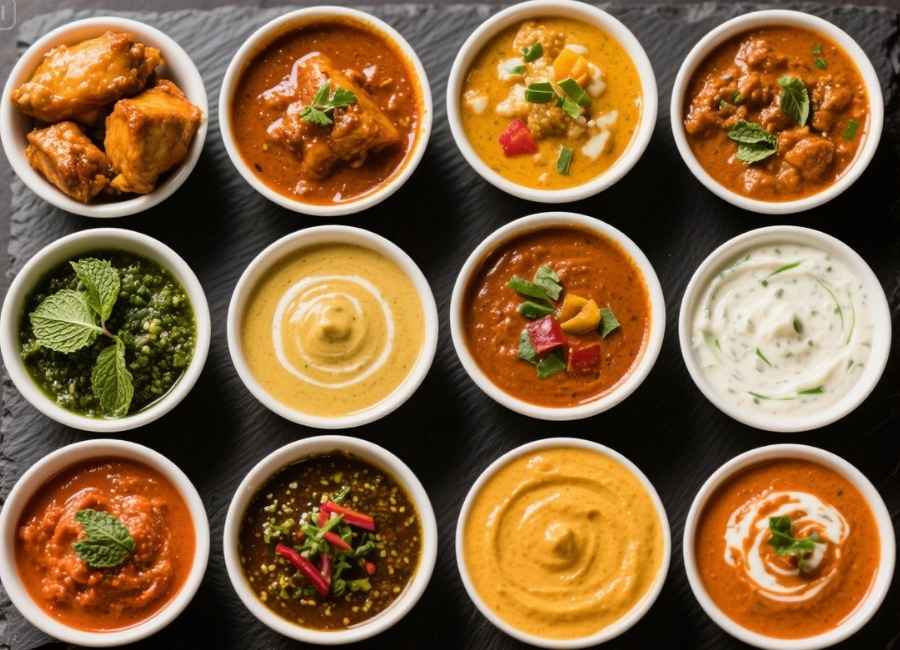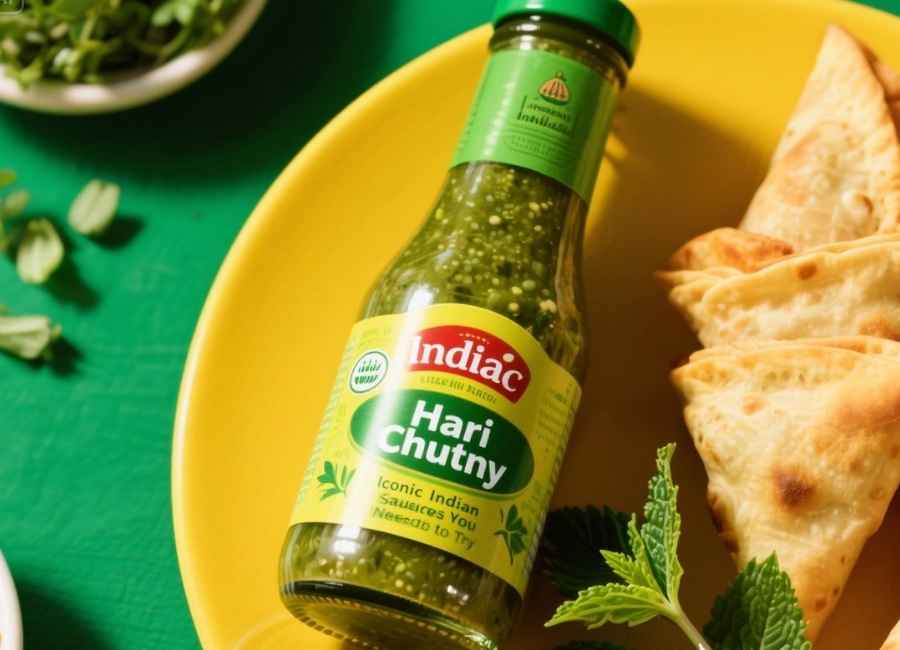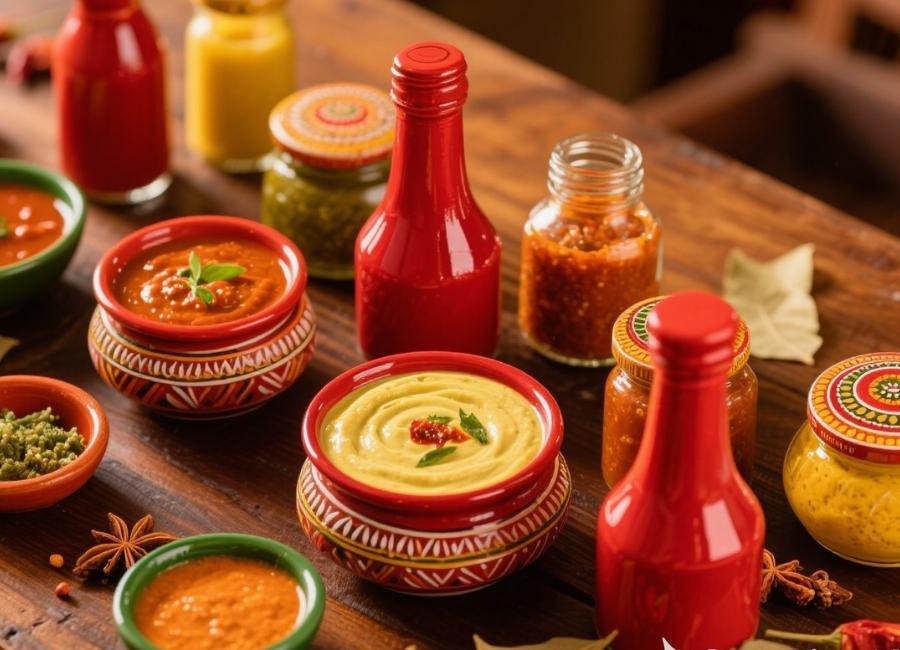When it comes to global cuisines that tantalize the taste buds, Indian cuisine stands out for its incredible mix of spices, rich flavors, and deep culinary heritage. But beyond the curries and flatbreads lies another gem that often goes underappreciated—even though it’s on almost every plate in India. We’re talking about Indian sauces, also known as chutneys, dips, and gravies.
Indian sauces are more than mere condiments. They add depth, balance, and personality to a meal, bringing out the best in every bite. Each sauce is a masterpiece in its own right, offering a unique combination of flavors—from sweet and tangy to fiery and aromatic.
Whether you’re whipping up an authentic Indian dinner or simply looking to elevate your snacks, this guide to Indian sauces will introduce you to their diversity and how best to use them. Spoiler alert: These aren’t just accompaniments; they often steal the spotlight.
A Quick Overview of Indian Sauces

Indian cuisine boasts a variety of sauces that can broadly be categorized into two types:
- Chutneys and Dips: These are fresh or cooked sauces often served on the side of a meal for dipping or drizzling. Think tangy mint chutney or cooling yogurt-based raita.
- Curries and Gravies: These are thicker, more robust sauces that form the base of dishes like tikka masala or butter chicken.
What stands out about Indian sauces is their ability to balance multiple flavor profiles. You’ll find a mix of sweet, salty, sour, and spicy notes harmoniously coexisting in most Indian sauces. Let’s dig deeper and explore the most iconic ones.
Iconic Indian Sauces You Need to Try

1. Mint and Coriander Chutney (Hari Chutney)
This refreshing green chutney is perhaps the most versatile of all Indian sauces. Made with fresh mint, coriander, green chilies, lemon juice, and spices, it’s a must-have side dish.
- What it pairs with: Serve it with samosas, pakoras, or stuffed parathas. It’s also a staple in Indian street food like chaat and can even be used as a sandwich spread.
- Flavor profile: Bright, tangy, and slightly spicy.
2. Tamarind Chutney (Imli Chutney)
Sweet and tangy with a hint of spice, tamarind chutney is another staple in Indian households. Its deep, caramel-like flavor comes from tamarind pulp, jaggery (unrefined cane sugar), and spices.
- What it pairs with: Drizzle it over chaat, serve it with samosas, or use it as a dipping sauce for crispy snacks.
- Flavor profile: Sweet, sour, and mildly spicy.
3. Garlic Sauce (Lahsun ki Chutney)
This fiery sauce is not for the faint-hearted. Made with ground garlic, red chilies, and sometimes tomatoes, it packs a punch of heat and bold flavors.
- What it pairs with: Perfect for pairing with naan, biryani, or any dish that needs an extra kick.
- Flavor profile: Spicy, pungent, and earthy.
4. Mango Chutney (Aam Chutney)
A true classic, mango chutney combines the sweetness of ripe mangoes with the warmth of Indian spices. Sometimes, green mangoes are used for a tangier version.
- What it pairs with: Pairs beautifully with grilled meats, cheese platters, or as a topping for plain rice.
- Flavor profile: Sweet, fruity, with a hint of spice.
5. Curry-Based Tomato Gravy
When we think of Indian curries, this rich tomato-based gravy comes to mind. It’s prepared with pureed tomatoes, onions, cream, and a mix of aromatic spices like garam masala.
- What it pairs with: This is the base for dishes like butter chicken, paneer tikka masala, and dal makhani.
- Flavor profile: Creamy, slightly sweet, and mildly spiced.
6. Yogurt-Based Raita
Raita is a cooling sauce made with yogurt, diced vegetables (like cucumber or onions), and a sprinkle of spices such as cumin and chili powder.
- What it pairs with: Ideal for tempering the heat of spicy curries and biryanis.
- Flavor profile: Mild, tangy, and refreshing.
7. Coconut Chutney
Hailing from South India, coconut chutney is a smooth sauce made from blended fresh coconut, green chilies, and tempered mustard seeds.
- What it pairs with: Best served with dosa, idli, or vada for a traditional South Indian breakfast.
- Flavor profile: Mildly sweet and nutty with savory undertones.
Benefits of Exploring Indian Sauces

Adding Indian sauces to your meals isn’t just about enhancing flavor; they offer numerous other benefits:
- Nutritional Value: Made from wholesome ingredients like fresh herbs, nuts, and yogurt, many of these sauces are packed with essential nutrients.
- Versatility: Indian sauces can complement a wide range of global cuisines beyond Indian food.
- Flavor Exploration: They help you explore flavors and spices like cumin, coriander, and tamarind that you might not use otherwise.
- Easy to Make: Many traditional Indian sauces require simple, everyday ingredients and are quick to whip up.
How to Use Indian Sauces at Home
Indian sauces can be easily adapted to suit everyday dishes. Here’s how to incorporate them into your cooking:
- Drizzle: Use mint chutney or tamarind chutney to top roasted vegetables or grilled meats.
- Base: Transform a plain chicken breast or tofu cube into a gourmet dish by simmering it with tomato curry gravy.
- Dip: Pair garlic chutney with raw veggies or crackers for an unexpected yet delightful snack.
- Marinade: Mix yogurt-based sauces with spices to coat proteins like chicken or paneer before grilling.
- Spread: Swap traditional condiments with mango or coconut chutney for sandwiches and wraps.
Start Your Indian Sauce Journey Today
Indian sauces are an invitation to experiment, discover, and appreciate the art of balanced flavors. Whether you’re a traditionalist who enjoys the timeless classics or a culinary explorer seeking something new, there’s an Indian sauce for everyone.
Feeling inspired to whip up your own creations? Begin with fresh ingredients, and don’t shy away from spices. Once you familiarize yourself with these sauces, you’ll never look at condiments the same way again.
Looking for detailed recipes or tips on how to perfect your sauces? Keep exploring our blog for more inspiration and resources to master Indian cooking.



















